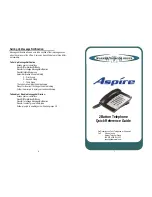
- 27 -
●
The internal battery is a consumable item. If the performance of the internal
battery does not recover (e.g. the usable time after each charge has
become extremely short), the internal battery is at the end of service life, so
stop using it. Since the battery is built-in type, the product will be kept at an
au shop etc. and charges will be incurred for repair. Also, you may not use
the product in certain period of time. Note that the length of service life
varies depending on the usage condition, etc.
●
Because the internal battery performance or service life will become low,
do not store the product in the following conditions.
•
Battery level is full (soon after charging is complete)
•
Battery level is empty (to the extent that the product is not powered on)
•
In extremely hot or humid conditions
●
Internal batteries sometimes swell up as they approach the end of their
service life depending on the usage condition. This is due to the properties
of lithium-ion batteries, and is not a problem in terms of safety.
■
Charger
●
Do not wrap the power cord of the specified charger (sold separately)
around the charger. Also, do not forcibly bend the charger's plug or the
connection between the connector and power cord. Do not apply excessive
force to it such as placing a heavy object on the cable of it or pulling it.
Doing so might cause a fault.
●
When unplugging the power plug of the specified charger (sold separately)
from the outlet, hold the power plug to do so. If you pull the cord, it might
be damaged.
■
au IC Card
●
Do not forcibly remove or insert the au IC Card. Be careful not to exert
excessive force when inserting the card into your au cell phone.
●
You are responsible for any damage caused by inserting your au IC Card
into some other IC card reader/writer, etc.
●
Do not put stickers etc. on the au IC Card.
●
Do not insert the au IC Card attached with a conversion adapter. Doing so
might cause a fault.
●
Do not subject the au IC Card to actions that can damage it (use in
high-temperature conditions, throwing in a fire, allowing metal contacts to
come in contact with foreign objects, subjecting to shock, bending or
pressing, wetting, etc.). Doing so might erase data or cause a fault.
















































